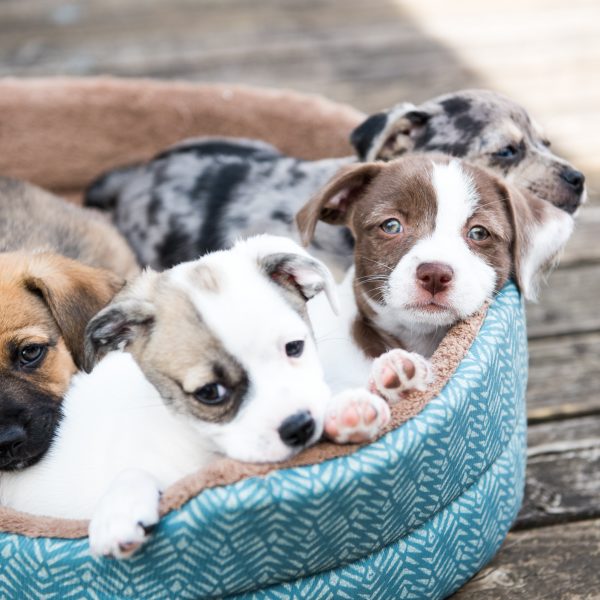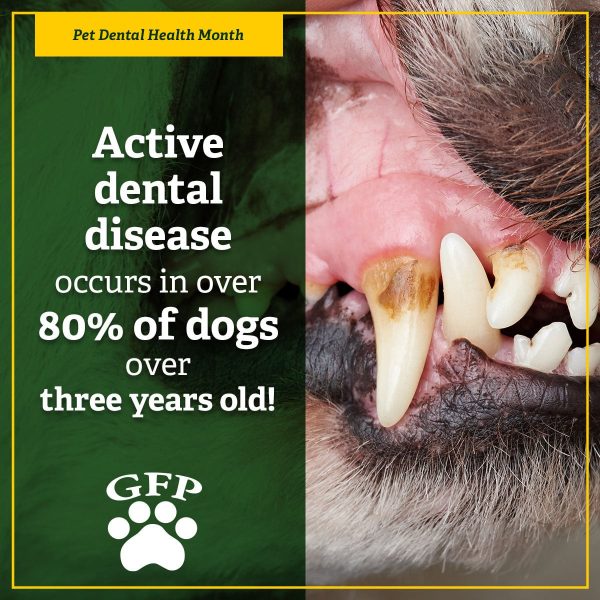How to Determine the Grooming Level of a Puppy

When it comes to the grooming level of a puppy, a lot of people think about how much their coat will shed, how often they will need to be bathed, and not much else. There is still a misconception that because a dog breed is low-shedding that they are also low maintenance or don’t require much grooming.
In some cases, this may be true. In others, it’s far from true. Not to mention, there is a lot of grooming and care that should happen for every dog. There is no such thing as a dog that requires no grooming, but there are some things you can consider to determine how much extra care they might need. Here’s how to determine the grooming level of a puppy:
Coat Type
There are different types of dog coats, and a few factors make up a dog’s coat type. Their coat will shed a certain amount; it will have fine or coarse hair; it will be short, medium, or long; and it will be curly, corded, wavy, straight, etc. All of these will affect how often your puppy will need to be brushed and bathed.
Some dogs require regular brushing and only occasional bathing, while others require regular brushing and bathing, plus professional grooming. It’s important for you to consider your puppy’s coat and to know what their brushing, bathing, and professional grooming needs will be in order to determine whether their grooming level is considered low, moderate, or high.
Amount of Shedding
How much a dog’s coat will shed will have an effect on their grooming needs, but it won’t be the only thing that affects it. A dog that has a medium or high-shedding coat will often require daily or weekly brushings to help remove loose fur and control dog shedding.
For high-shedding dogs, this makes them more comfortable and can help reduce the amount of fur around the house because the loose fur ends up on the brush instead of everywhere else. It’s important to remember that regular brushing will not stop shedding from happening, but it will help contain it. Plus, the regular grooming sessions can become a bonding time for you and your pup.
It’s also important to consider how often your puppy’s breed and coat may require professional grooming. Some dog breeds have heavy seasonal shedding sessions twice a year. During those times, a grooming glove at home and professional grooming can help keep your dog more comfortable as the seasons change. Some dog breeds require professional grooming every 4-6 weeks to keep their coat maintained and healthy.
Granted, if you are able to groom and clip your dog’s coat on your own at home, professional grooming may not be necessary. However, it’s important that you know what you are doing if you are going to clip and groom at home, so you do not clip your dog’s coat too short or nick their skin. Clipping a dog’s coat too short is a common mistake, especially with dogs that have a double coat.
Length and Type of Hair
Regular brushing helps remove loose hair and prevents tangles and mats. This is especially important for dogs that have longer fur, as well as dogs that have a curly, corded, or wavy coat. Longer fur is more prone to tangles, which can lead to matting. Curly, corded, or wavy coat types are also more prone to tangling and matting, so regular brushing is important.
Even if a dog is considered low-shedding, they will still need regular care to maintain a healthy coat. Poodles are often prized for their low-shedding coat. Although their coat is low-shedding, it is also usually high-maintenance and requires frequent brushing to prevent their curly or corded coat from tangling and matting, especially if you are trying to maintain a show cut.
Bathing Frequency
Coat type and skin type will work together to determine how often your dog needs a bath. Your dog’s coat produces natural oils to protect their coat and skin. Bathing too often strips away these protective and necessary oils, causes your dog’s skin to become dry, and also damages their coat. For many dog breeds, it’s recommended to bathe them at least once every three months.
For these lower maintenance breeds and those with normal skin, it’s usually recommended to bathe your dog when they get dirty or smelly. You can bathe a dog with normal skin more frequently, like once a month. If you bathe a dog more often than that, it’s important to use dog-friendly shampoos with moisturizers to help prevent dry skin. Some dogs may require more frequent bathing. However, you should not bathe a dog more than once a week unless it is specifically recommended by your veterinarian.
Other Grooming Needs
Aside from brushing, bathing, and professional grooming, there are other grooming needs that all dogs require to stay healthy.
Dental Care
One of the most overlooked grooming needs for dogs is dental care. Dental issues are one of the leading health issues dogs face, and it is one of the most preventable. Some dog breeds are more susceptible to dental disease than others. Small dog breeds, in particular, are prone to developing dental disease. It’s important to care for your dog’s teeth and mouth, and even more so for the breeds prone to it.
Proper dental care for dogs means taking care of your dog’s teeth and gums to prevent the tartar buildup that causes periodontal disease and tooth decay. Brushing your dog’s teeth daily is ideal and is much easier if you get your puppy used to it early on. There are also other options aside from a toothbrush for dogs, like enzyme toothpaste, dental chews, and more.

Check and Clean Ears
Another important grooming need is ear care. Regularly checking your dog’s ears and carefully cleaning them as needed helps reduce the chance of ear infections. Dogs with drop-down ears, or ears that flop over, are more prone to developing ear infections because their ears are more likely to trap moisture, dirt, and debris.
So, if your dog has adorable floppy ears, you’ll want to check their ears more frequently. You likely won’t have to clean your dog’s ears every time you check them, but checking them regularly will help you reduce ear infections overall or catch them early if something is starting to happen.
Trim Nails
Trimming your dog’s nails regularly is also important. Usually, cutting your dog’s nails once a month is sufficient, but some dogs may require more frequent trimming. You want to ensure their nails do not become too long, and you also want to make sure you don’t trim them too short or cut the quick.
Nails that are too long or too short are painful for your dog and can affect their ability to walk and move around. Cutting the quick also exposes the nerves in your dog’s nails and becomes an open wound that can be prone to infection. If you’re not comfortable trimming your dog’s nails, make sure you are prepared to take them in regularly to have it done professionally.
Consider the Grooming Level of a Puppy
Each dog breed is different. As you are doing your research to determine the best fit for you, make sure you are considering the grooming level of a puppy. Some dog coat types require more care than others, and this will affect the overall costs of owning a dog.
You want to make sure you have the time and resources needed to properly care for your puppy to keep them happy and healthy. This is one of the important ways to be a responsible dog owner.
Once you have your puppy home, you can start training immediately and prepping for socialization once they’ve finished their shots. You can also start getting them used to the bathtub, having their coat brushed, teeth brushed, ears checked, and paws handled to make grooming a positive experience for them and an easier process for you throughout their life.
